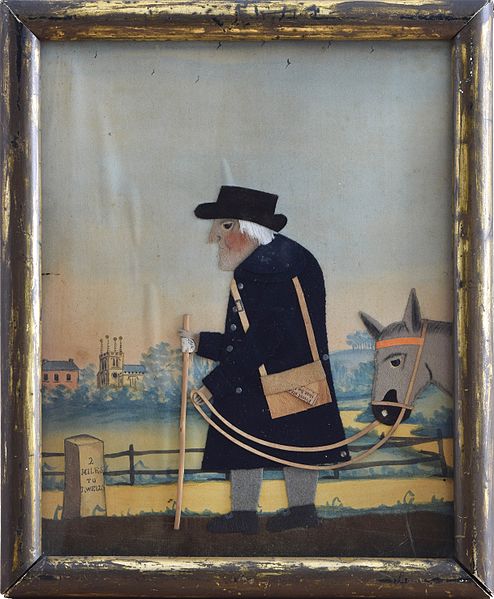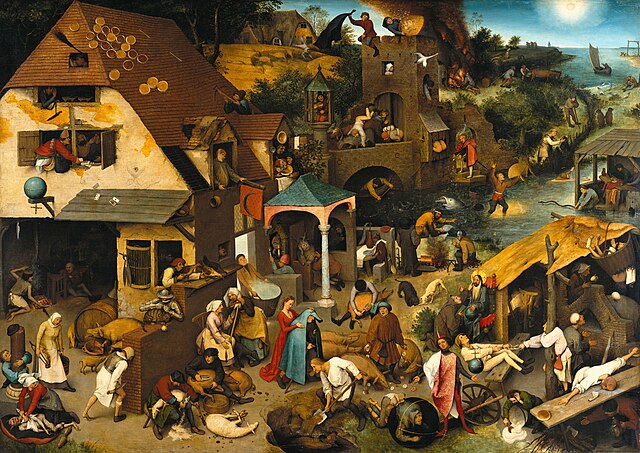Folk art covers all forms of visual art made in the context of folk culture. Definitions vary, but generally the objects have practical utility of some kind, rather than being exclusively decorative. The makers of folk art are typically trained within a popular tradition, rather than in the fine art tradition of the culture. There is often overlap, or contested ground with 'naive art'. "Folk art" is not used in regard to traditional societies where ethnographic art continue to be made.
Pew group of Staffordshire figures, England, c. 1745, salt-glazed stoneware. 7 1/2 × 8 3/8 in. (19.1 × 21.3 cm)
"Gran calavera eléctrica" by José Guadalupe Posada, Mexico, 1900–1913
"Old Bright, The Postman", George Smart, c1830s
Traditional styles of faience pottery from Székely Land, Romania, on sale in Budapest in 2014. A conventional idea of folk art, though no doubt made in quasi-industrial conditions.
Folklore is the body of expressive culture shared by a particular group of people, culture or subculture. This includes oral traditions such as tales, myths, legends, proverbs, poems, jokes, and other oral traditions. This also includes material culture, such as traditional building styles common to the group. Folklore also encompasses customary lore, taking actions for folk beliefs, and the forms and rituals of celebrations such as Christmas, weddings, folk dances, and initiation rites.
Netherlandish Proverbs by Pieter Bruegel the Elder, 1559
A European folk tale, Little Red Riding Hood; illustration by Jessie Willcox Smith, 1911
A German folk tale, Hansel and Gretel; illustration by Arthur Rackham, 1909
Indian Folk Worship at Batu Caves, Selangor Malaysia








